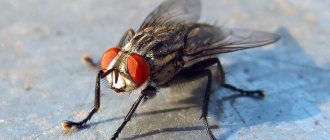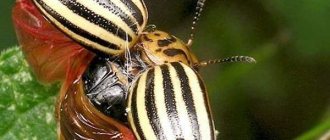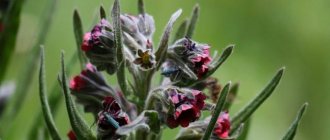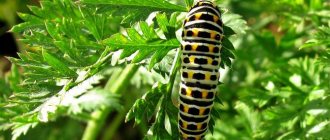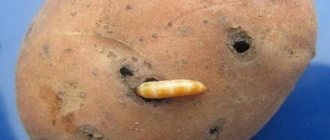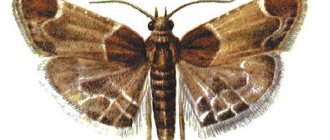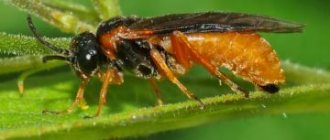Hornets description
Hornets belong to the genus Vespa (wasps). Hornets are the largest and most aggressive representatives of the wasp family, the length of the largest species reaches up to 5.5 cm. There are only about 20 species of hornets in the world. Most live in tropical Asia, but the insects are also found in Europe, Africa and North America, where the European hornet was introduced by humans. The venom of some hornets, such as the Asian giant hornet, is extremely dangerous and the sting can be fatal. The hornet is not aggressive and is unlikely to bite unless you attack it or its nest.
Spreading
Young hornet (Vespa) woke up, spring 2021, Novosibirsk.
Hornets live mainly in the Northern Hemisphere. The most famous is the common hornet ( Vespa crabro
), common in Europe (except for areas north of the 63rd parallel). This is the only species that lives in North America, Ukraine and the European part of Russia (except for remote areas of the Far North). In the east, the range of this species extends to the Urals and Western Siberia (found in the vicinity of Khanty-Mansiysk, Surgut and Nefteyugansk). In a number of areas it is endangered and needs protection. The European hornet was introduced into North America by accident in the middle of the 19th century, where it lives today at approximately the same latitudes as in Europe, but has never been found in the western part of North America. In Asia, the European hornet is found in southern Siberia, Kazakhstan, and the northern and eastern parts of China.
Unfinished nest of a common hornet ( Vespa crabro
) with eggs
The Asian huge hornet lives in the Primorsky Territory, China, Korea, Taiwan, Cambodia, Laos, Thailand, Vietnam, Indochina, India, Nepal, Sri Lanka, but is most common in the mountains of Japan, where it is known as the huge “sparrow-bee” (Suzumebachi). In addition, the huge Asian hornet is found in semi-dry subtropical regions of Central Asia (Iran, Azerbaijan, Turkey, Afghanistan, Oman, Pakistan, Turkmenistan, Uzbekistan, Tajikistan), Southern Europe (Italy, Malta, Albania, Romania, Greece, Bulgaria, Cyprus) , in North Africa (Algeria, Libya, Egypt, Sudan, Eritrea, Somalia), along the shores of the Gulf of Aden and in the Middle East.
Throughout tropical Asia, as well as in France and Spain, Asian predatory wasps ( Vespa velutina)
), building nests openly on tree branches and hunting bees.
Harm or benefit of hornets
Hornets are often considered pests, especially when they nest near people, because... they will aggressively defend their nest if they feel it is in danger.
Hornets are quite dangerous insects, for example the Asian giant hornet is considered the most dangerous arthropod on the planet. When in danger, the insect releases a special “smell” that attracts other hornets. Hornets can attack humans due to the characteristics of perfume.
Hornets cause particular harm to beekeepers, destroying all the bees in the apiary.
One hornet can destroy up to 10 bees. When one hornet finds a bee colony, it leaves a special scent that attracts other hornets. (There is an opinion that hornets destroy only sick bees, although this fact has not been proven.)) There are cases when bees defeat a lone hornet in a battle, surrounding it.
Hornets whose nests have been destroyed or poisoned are considered especially dangerous. In some countries, it is prohibited to destroy hornets; they are believed to be beneficial for the ecosystem.
Alarms
Like many social insects, hornets are capable of mobilizing an entire nest and stinging an enemy for the purpose of their own defense. This can pose a danger to both animals and humans. Having detected a threat, the hornet releases an alarm pheromone - a special substance that activates other hornets to attack. It is undesirable to kill a hornet close to the nest, since distress signals can rouse the entire family to attack their offender. The attack can also be triggered by various materials that, due to their chemical properties, easily come into contact with the pheromone, including clothing, skin, dead hornets and their prey, some food seasonings, for example, banana and apple flavors containing C5 alcohols and C10 esters.
What hornets look like, their size and structural features
Queen
Hornets have two pairs of wings and six legs. The insect has large and strong jaws. Females are much larger than males. Female hornets have 12 antennal segments. In males 13. Hornet venom contains a large amount of acetylcholine (5%)
Hornet sizes
Hornets vary in size depending on the species.
- Adult European hornets (common hornet) are approximately 2.5-4.5 cm long.
- Eastern Hornet. Dimensions 2.5-3 cm.
- Dybovsky's Hornet - no more than 3.5 cm
- Asian giant hornet - 5.5 cm. Wingspan up to 8 cm.
Kinds
- Vespa affinis Linnaeus, 1764
- Vespa analis Fabricius, 1775
- Vespa basalis Smith, 1852
- Vespa bellicosa de Saussure, 1854
- Vespa bicolor Fabricius, 1787
- Vespa binghami du Buysson, 1905
- Vespa crabro Linnaeus, 1758 - Common hornet
- Vespa ducalis Smith, 1852
- Vespa dybowskii Andre, 1884
- Vespa fervida Smith, 1858
- Vespa fumida Van der Vecht, 1956
- Vespa luctuosa de Saussure, 1854
- Vespa mandarinia Smith, 1852
- Vespa mocsaryana du Buysson, 1905
- Vespa multimaculata Perez, 1910
- Vespa orientalis Linnaeus, 1771
- Vespa philippinensis de Saussure, 1854
- Vespa simillima Smith, 1868
- Vespa soror du Buysson, 1905
- Vespa tropica Linnaeus, 1758
- Vespa velutina Lepeletier, 1836
- Vespa vivax Smith, 1870
How to distinguish a hornet from other insects
Hornets are often confused with other insects, such as wasps and bees.
The difference between hornets and other wasps
Wasp
The nest of hornets is larger in size than that of wasps. Wasp nests can often be found close to or underground, or inside a loose structure, such as between the inside and outside walls of a house or even inside an old sofa.
If the nest is significantly larger and what you believe contains thousands of members, you are most likely seeing a wasp nest.
Unlike wasps that are yellow and black, the hornet has more colors in its color and has orange and brown shades.
Hornets' heads are larger in proportion to their body size compared to other wasps, and the head structure is slightly different.
European hornets have a reddish-brown head, thorax, first abdominal segment and legs.
Be aware of the difference in size between a hornet and a wasp. One of the main differences between a hornet and a wasp, which is easy to recognize both up close and at a distance, is size. The European hornet grows up to 4 cm in length, and the maximum size of the wasp is 2.5 cm.
Note the large width of the head behind the eyes, this region is wider in overall body size in hornets than in other members of the wasp family.
Differences from bees
Bee
The hornet, like the wasp, has a thin waist between the thorax and abdomen, this distinguishes them from the bee family, which has a thick waist between the thorax and abdomen.
Pay attention to the wings (whether the wings are folded along the length of the body), because members of the wasp family fold their wings along the length of their bodies when resting, but bees do not. There are no serrations on the hornet's sting.
A bee sting has serrations; when bitten, the sting is torn out of the bee's abdomen and the bee dies. And hornets, like other members of the wasp family, have a sting without barbs, which allows them to sting repeatedly without losing the stinger. The hornet's sting is longer than that of a common wasp or bee sting.
Notes
- Gornostaev G. N.
Insects of the USSR. - Moscow: Mysl, 1970. - 372 p. — (Reference books for geographers and travelers). - ↑ 1 2 Ivan Madebeykin, Igor Madebeykin.
Are hornets beneficial insects or pests? // Science and life. - 2018. - No. 8. - P. 122-124. - Makino et al. 2011. First record of occurrence of Xenos moutoni (Strepsiptera; Stylopidae), an important parasite of hornets (Hymenoptera: Vespidae: Vespa), in Korea. (English) (Retrieved February 22, 2011)
- (1961) "Identification of acetylcholine, 5-hydroxytryptamine, histamine, and a new kinin in hornet venom (V. crabro)." J. Physiol. 159
(1):167–182. DOI:10.1113/jphysiol.1961.sp006799. - Stung – How tiny little insects get us to do exactly as they wish.
- 25 Japanese suffered from giant hornet bites Archived November 22, 2012.
- P. Barss (1989). “Renal failure and death after multiple stings in Papua New Guinea. Ecology, prevention and management of attacks by vespid wasps". Med J Aust 151
(11–12):659–63. PMID 2593913.
Features of the life of hornets
Hornets are social insects, so they can unite when attacking a victim.
The nests have a strict hierarchical system, with queens dominating hornet hives and being the only females capable of reproducing. Queens lay eggs. Most other hornets are asexual workers who perform important social duties such as building the hive, collecting food, feeding the young, and defending the colony.
There are few males and they have only one role - mating with the queen. Males usually die soon after completing their sexual task.
In colder climates, hornet nests are abandoned in winter; young queens and their eggs survive by finding sheltered areas under tree bark or homes.
In the spring, such a queen will lay a new nest, and soon her young will become workers and take over the duties of the new hive, leaving the queen to breed.
She will produce more workers to expand the hive and before she dies, she will produce a breeding generation of new queens and males (drones) to start everything over again.
What does an insect eat?
Hornets feed on nectar and plant foods containing a lot of sugar. Insect preferences include ripe fruits, berries, flower nectar, honey and tree sap.
At the same time, hornets are predators. They hunt insects to feed their larvae. With the help of its sting and powerful jaws, the hornet easily copes with flies, horseflies, gadflies, bees, wasps, grasshoppers and locusts. It completely chews the prey and feeds it to the larvae.
Hornets nests
Hornets nest
Insects create nests by chewing wood into papery building material.
The color of the nest may vary:
- brown
- yellow
- yellow-white
- beige
Often nests can be seen on roof eaves and under decking, tree hollows, birdhouses, caves, and attics. Outdoors, hornets usually build nests high above the ground, such as in trees, on utility poles, or in dense bushes.
Most often the nest is discovered in the fall when the leaves have fallen, by which time most of the hornets will be dead or dying, leaving only the queen to hibernate and survive the winter.
Reaction to a hornet sting
If someone is stung multiple times or has a severe allergy to insect venom, systemic reactions may occur that can affect the entire body. Typical symptoms and reactions to bites:
- Strong pain
- Redness
- Swelling around the bite site
If a person is allergic:
- Nausea, vomiting
- Cold extremities
- Blue discoloration of the neck, eyelids, face, ears
- Attacks of suffocation
- Swelling of soft tissues
- Red spots on the body
- Loss of consciousness
